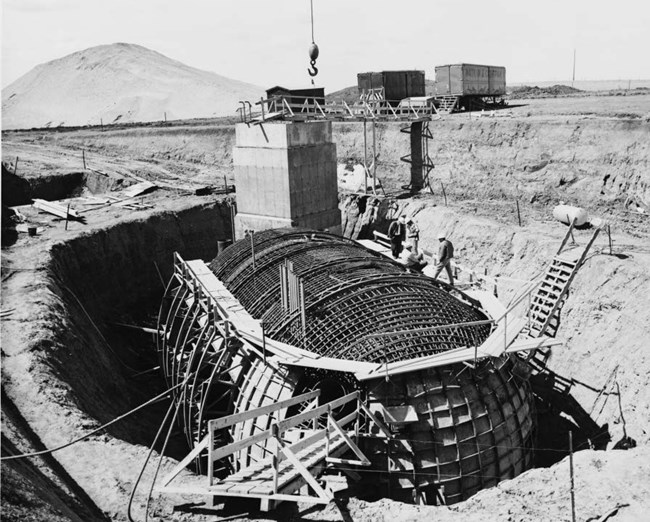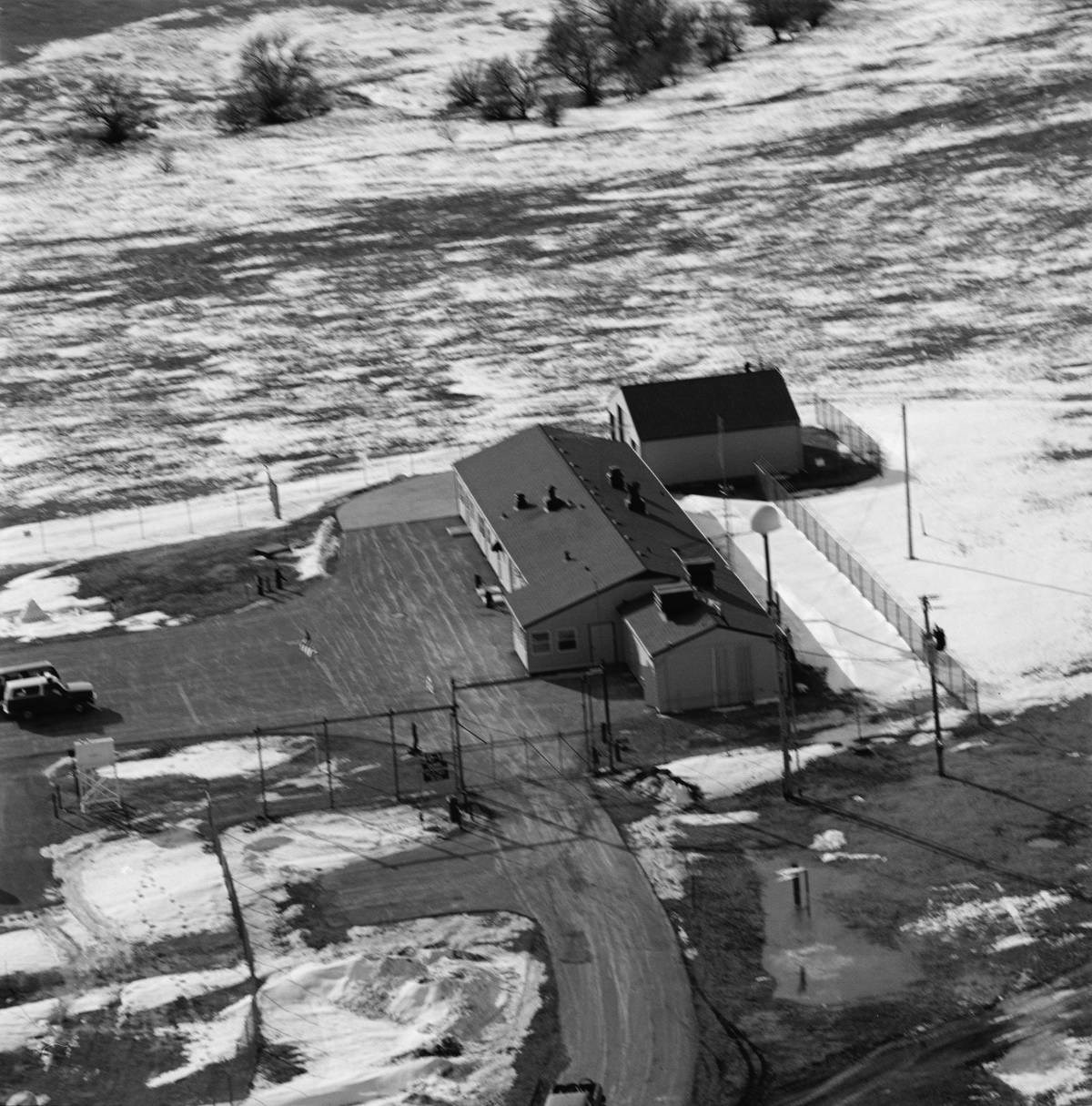Last updated: October 20, 2020
Article
Delta-01 Cultural Landscape

NPS / Minuteman Missile National Historic Site
During the Cold War, which lasted from the end of World War II to 1991, the development of the Minuteman Intercontinental Ballistic Missiles (ICBMs) represented U.S. advancement in the “arms race” - a competition between the U.S. and Soviet Union to achieve superior military capabilities. The Minuteman ICBMs used solid-fuel rocket engines, which, unlike liquid-fuel engines, provided the stability for near instantaneous deployment. The Air Force organized the construction of sites to contain the launch facilities (silos) and separate launch control centers. A single underground launch control center linked to 10 underground launch silos.

NPS
During initial construction, the ICBM's range restricted locations of facilities to the northern part of the United States, closer to the Soviet Union. Ellsworth Air Force Base in South Dakota was selected as the second wing of Minuteman Missile deployments. Groundbreaking for the launch facilities (silos) occurred near Bear Butte on September 11, 1961. Among Ellsworth’s first twenty launchers were the Delta-01 (launch control center) and Delta-09 (silo), located 10 miles apart and completed in November 1962. Both facilities remained in operation until 1991, coinciding with the dissolution of the Soviet Union. Delta-01 and Delta-09 were exempt from demolishment following the end of the Cold War with the intention of converting them into museum facilities. In 1999, Congress authorized Minuteman Missile National Historic Site, and in 2002 the park was established following the transfer of the two Delta sites to the National Park Service.
Landscape Description
The Delta-01 Launch Control Facility cultural landscape occupies 6.40 acres in Jackson County, South Dakota. The facility includes the topside support structure, detached vehicle storage building, and underground launch control center. A security fence surrounds 1.85 acres of the landscape and contains the one-story, rectangular support structure and storage building. Historically, the support building likely appeared to be a ranch house to those driving on the nearby Interstate 90. The underground launch control center elevator is accessible from the support structure. The curving entry road to the support structure passes over a steel cattle guard through the security gate. Extant recreational features used by Air Force personnel at Delta-01 include a volleyball court, horseshoe court, and basketball hoop. Other mission-supporting features include a helicopter pad, sewage lagoon, and a code burner. The code burner served to dispose of one time codes.

NPS
While both are part of Minuteman Missile National Historic Site, the missile silo (Delta-09) is its own cultural landscape separate from Delta-01. They were originally connected by underground blast-proof cables called the Hardened Intersite Cable System (HICS).
Historic Use

Library of Congress, Historic American Engineering Record (HAER SD-50-24)
At the end of World War II, the United States responded to Soviet Union expansion in Eastern Europe with a policy of containment and a commitment to developing more powerful weapons. Early missile designs—the Atlas and Titan—could be used over long ranges. However, their liquid-fuel was volatile and required a lengthy loading process for launching. With the Soviet launch of Sputnik in 1957 using liquid-fueled ICBM, the U.S. military's concern that the Soviet Union had superior ICBM capabilities increased. In response, the “Minuteman” missile program was authorized in 1958. The name referenced the Revolutionary War soldiers and their readiness to respond to a threat. The Minuteman missiles would use solid fuel, consist of three stages, and could be stored in underground silos.
In 1961, the first Minuteman missiles underwent testing. The design proved successful, and the Air Force began constructing facilities to house the missiles. It organized the Minuteman force into larger units, “wings,” each composed of three or four “squadrons.” A squadron was made up of five “flights,” each of which contained a single launch control center for ten unmanned launch facilities (silos). The Delta facilities were part of the 66th Strategic Missile Squadron of the 44th Missile Wing.

NPS

Library of Congress, Historic American Engineering Record ( HAER SD-50-A-1)
Delta-01 and other Minuteman facilities remained active until the late 1980s when the Cold War came to an end. In 1991, to conform to agreements contained in the Strategic Arms Reduction Treaty (START) Treaty, President George H.W. Bush started the process for destruction of Minuteman launch facilities. By 1996, all but one of the original 150 launch facilities were closed. Delta-01 and Delta-09 (the missile silo) remained intact with the purpose of becoming an interpretive museum facility. In 2004, following the installation of a security and fire suppression system and the development of safety procudres, the NPS began offering tours of the facilities.
Quick Facts
- Cultural Landscape Type: Historic Site
- National Register Significance Level: National
- National Register Significance Criteria: A, C
- Period of Significance: 1963-1993
Landscape Links
- The Missile Plains: Frontline of America's Cold War - Historic Resource Study
- National Register of Historic Places: Minuteman Missile National Historic Site
- Library of Congress: Ellsworth Air Force Base, Delta Flight, Launch Control Facility (Historic American Engineering Record)
- More about NPS Cultural Landscapes

